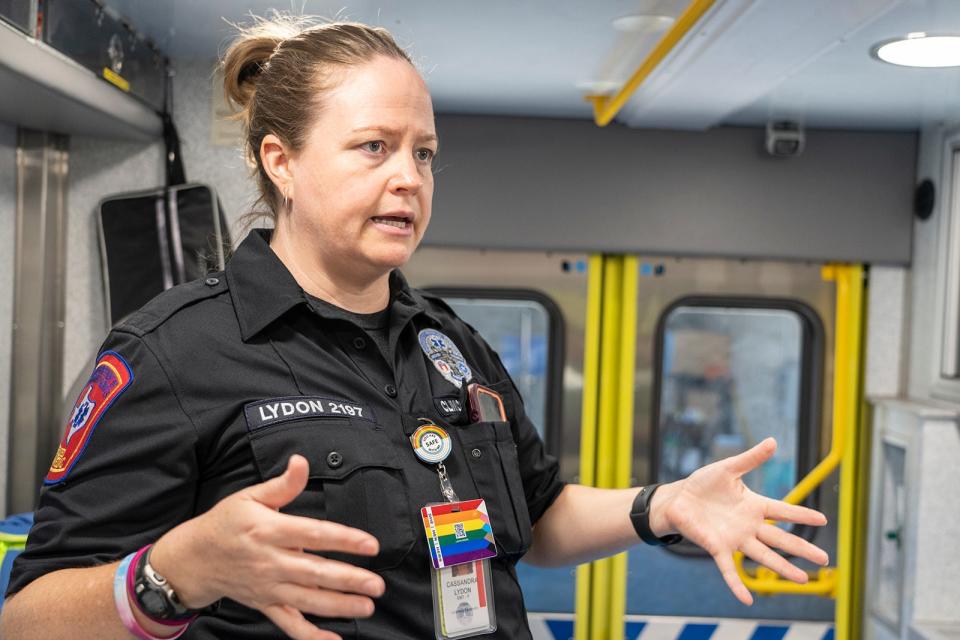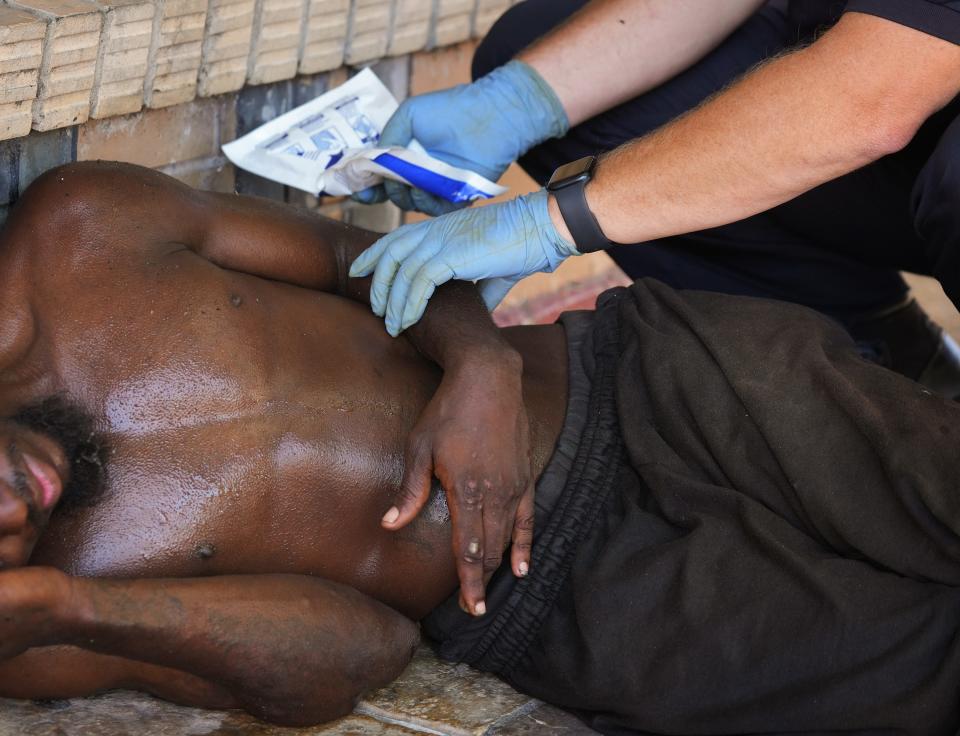Hot days mean Austin emergency rooms racing to cool people quickly
It's record-breakingly hot. Daily high temperatures have been consistently above 100 degrees, and that is expected to continue for the next week.
Local emergency rooms are feeling the heat, too, though physicians say they are not overwhelmed with cases.
For the week of July 10-16, Austin-Travis County EMS reported 92 heat-related illness calls. Emergency room visits were up 84% from the week before, when temperatures were not as severe. Since May 1, there have been 436 heat-related hospital visits, 74% by men and most by patients ages 30 to 39, Austin-Travis County EMS reported.
Cases of heat illness: Austin paramedics respond to record number of heat-related incidents in June, July
Dr. Nicholas Steinour, the emergency department director for Ascension Seton hospitals, said his hospitals are seeing patients daily with heat related-illnesses. It's a few more patients every day than in years past, he said.
Dr. Ann Buchanan, an emergency room physician at St. David's Medical Center, said what she has seen hasn't been out of the ordinary.
"It's hot in the summer; it's common that we'll have some heat exhaustion. Occasionally, we'll have a heat stroke, but that's pretty rare," she said.
Some patients have had heat cramps caused by dehydration. Heat cramps are the first level of heat illness. Heat exhaustion is the second and is marked by excessive sweating or a cold or clammy feeling. Heat stroke typically involves an altered brain state and is the most severe.
The recent patients are workers who are in the elements, such as those in construction or landscaping, or they are vulnerable populations who can't escape the heat, such as the unhoused. They also might be people who can't pay their utility bills and don't have air conditioning, Steinour said.
"It's anybody that can't stay hydrated and stay cool," Buchanan said.
Some patients have compromised immune systems or take medications that prevent them from regulating their body temperature.
It's not just being out in the heat one time, Steinour said. Many of the people he sees are experiencing the cumulative effects of day after day of heat and dehydration.
One patient he recently saw, who had been sitting on asphalt with no access to water or a cooler space, came in with a body temperature of 108. That patient and others with elevated body temperatures have had to spend time in the intensive care unit.
Buchanan recently saw a patient with a 111 body temperature.
"Heat stroke is a true emergency," she said.
Buchanan also has seen more cases of kidney stones, which tend to increase in the summer because of dehydration.

How do the hospitals treat heat illnesses?
Often, emergency treatment starts by giving intravenous fluids, using cooling packs and trying to get patients rehydrated and cooled down where they are and in the ambulance.
Once at the hospital, doctors give patients cooled IV fluids, turn on box fans and place a wet sheet over them or mist them with water to get them cooled down. They might place ice in the groin and armpits. It's all about lowering that body temperature.
If patients have nausea, an anti-nausea medication can help. Sometimes a drink of water or drinks with electrolytes are all that is needed, Buchanan said.
Heat safety: Austin has seen record-breaking heat. Stay safe and out of the emergency room with tips

What can people do to avoid heat stroke?
Prevention is the best medicine, Steinour said.
Stay ahead of hydration. A lot of patients Steinour sees have gone day after day being dehydrated. Preemptively drink a lot of water if you expect to be outside the next day.
"If you are outside and hot and thirsty, you are behind the eight ball," he said.
Know that alcohol and caffeine dehydrate you. They don't count as part of your water intake. Buchanan also recommends alternating water and something with electrolytes if you are having trouble with hydration.
"Because it's hotter, you may need to drink more fluid than at other times," Buchanan said.
Head to the pool. If you lose electricity or don't have air conditioning, use the public pools to stay cool.
Use cooling centers. Libraries and park recreation facilities are allowing people to rest there during their open hours. Seek other indoor spaces such as big box stores or indoor malls for respite.
Stay indoors during the heat of the day. Exercise in the early morning hours or after sunset.
Check on neighbors and friends. Do they have air conditioning? Plenty of water?
Heat safety: Can medications make this Texas heat worse for my body?
Know the signs of heat illness
Heat cramps: Sweating; muscle aches; prickly heat rash, especially in areas where clothing meets the skin; and dizziness. Move the person to a cooler area, hydrate, remove excess clothing and put cold compresses (a wet towel or shirt or an icepack) on hands, feet, armpits, neck and forehead. Call a doctor.
Heat exhaustion: Flushed skin, sweating even more heavily, cold or clammy skin, nausea, not wanting to eat and a shallow heartbeat. Move the person to a cooler area, hydrate with water or an electrolyte drink, remove excess clothing, use cold compresses or spray them with water. Call the doctor to see if you need to go to the emergency room or a doctor's office.
Heat stroke: No sweating, fast heartbeat, fainting or feeling faint, breathing quickly, confusion or delirium, loss of consciousness and a high temperature. This is a medical emergency. If you can, quickly drive the person to the emergency room. If not, call 911. While driving or waiting for the ambulance, do all the same interventions: hydration, cooler area, less clothing and cold compresses.
This article originally appeared on Austin American-Statesman: Austin-area hospitals continue to see more people with heat sickness
